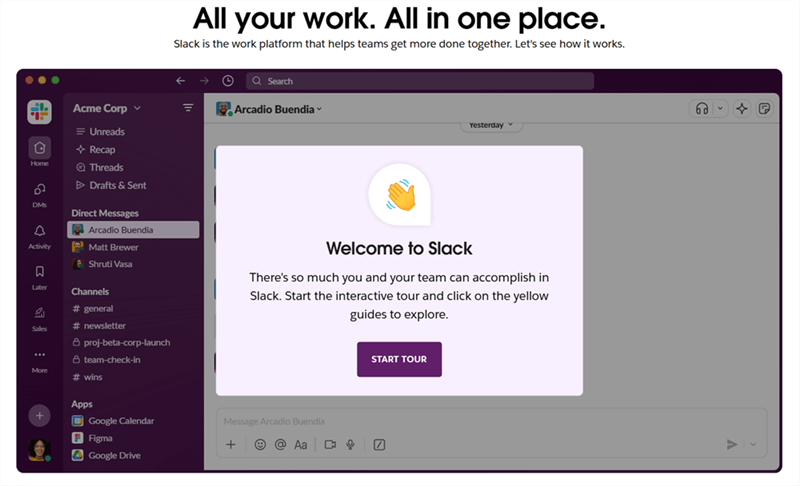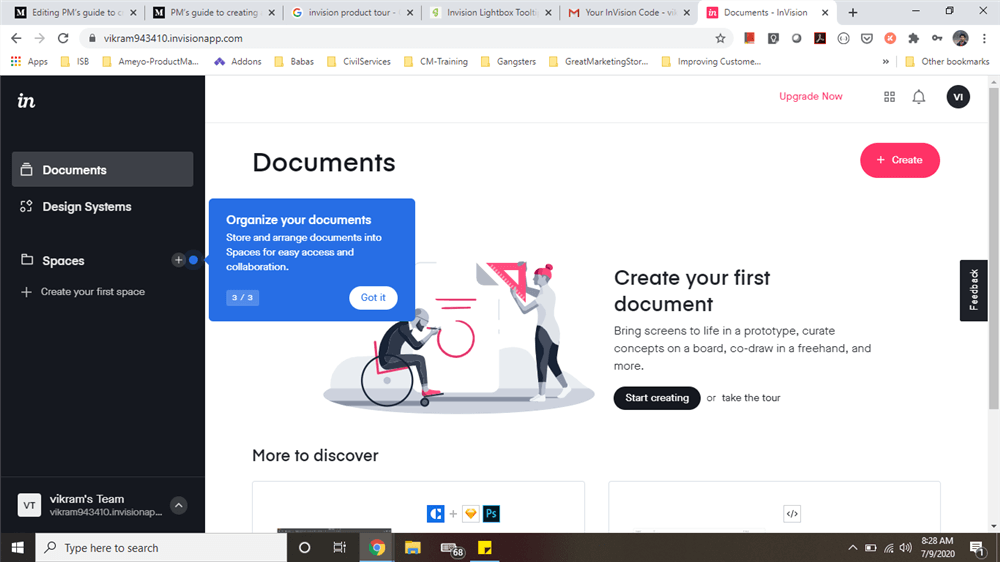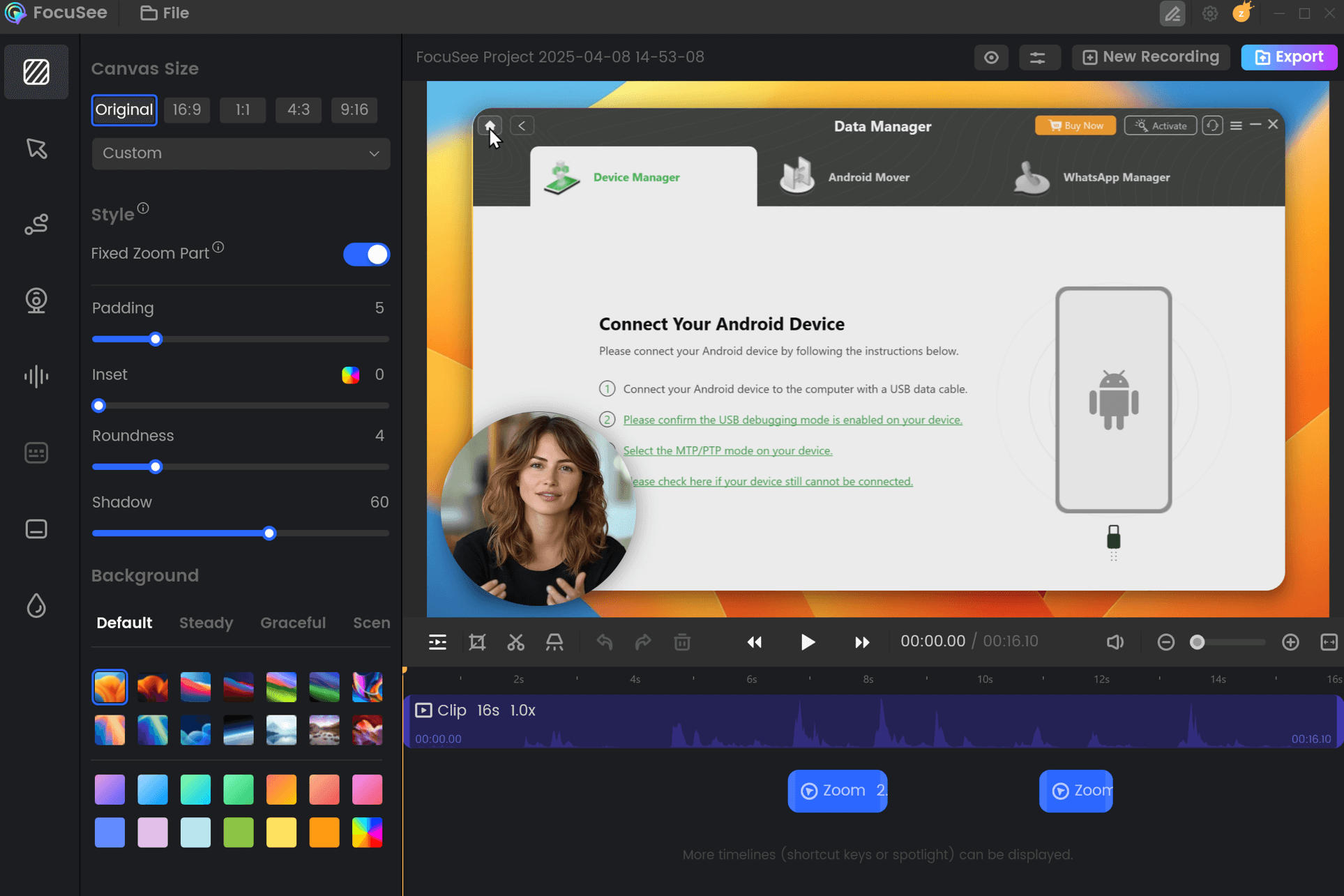When marketing a product, showing is always preferable to telling. A demonstration shows individuals how the product operates and what value it provides to consumers. Did you realize that there are so many distinct types of product demonstration?
Each style of walkthrough, whether live, video, or interactive, addresses the audience in a unique way. In this article, we will show the five most effective such approaches and assist you in selecting the ideal one for your product and target demographic.
What is a Product Demo?
A product demo (in short, a product demonstration) involves showcasing how a product works or letting the would-be visitors see it in action rather than just saying what amazing features it possesses. It spells out for any prospective buyer how the product can be valuable to them and solve their issues.
Here’s what a product demo usually does:
- Shows how the product works in real time
- Highlights key features and benefits
- Solves a specific problem or pain point
- Builds trust and confidence in the product
- Helps buyers make a decision faster
Top 5 Types of Product Demonstration
Not every demo fits every product; this is certainly true. Because of selling different items to different audiences in different ways, one approach will be better for one product than for another. Here are five common types of product demonstration that you can use to connect with your audience.
1. Live Demo – Real-Time Connection with Real People
A live demo is a real-time presentation of your product that is often conducted by Zoom, Google Meet, or in-person. It enables a sales representative or product specialist to take the audience through essential features, answer questions, and tailor the flow to the viewer’s needs.
Example: A SaaS company shows a live walkthrough of its project management tool during a call with a potential client. The rep answers questions, shares their screen, and tailors the demo to the client’s workflow.
It builds trust, engages, and helps expressly address any objections or concerns. They are particularly useful for B2B sales, especially when products tend to be complex or have a learning curve.

Live Product Demo
Pros:
- Builds trust through live interaction
- Allows for immediate questions and answers
- Great for handling objections on the spot
- Demonstrates confidence and product knowledge
Cons:
- Scheduling can be difficult with busy clients
- Depends on internet quality or in-person availability
- Requires confident and skilled presenters
- Not scalable for a large audience
2. Product Tours – Self-Guided, Step-by-Step Experience
A product tour is basically a step-by-step, guided experience in the product itself where New Users walk through the key features while using tooltips, popups, and checklists. It does wonders during onboarding and self-guided learning of the application.
Example: An example would be, when during signing in to a new CRM, it highlights buttons and features like “Click here to add a contact” or “This is your dashboard.” It essentially gives power to the user but helps explore instead of getting confused.
It’s especially useful for SaaS apps or digital tools where users want to learn by doing.

Product Tour Demo
Pros:
- Always available no need to schedule
- Users can learn at their own pace
- Excellent for onboarding new customers
Cons:
- Less personal no one to answer questions
- Can be boring if poorly designed
- May overwhelm users with too much info
- Limited ability to customize per audience
3. Recorded Demo – Shareable, Polished, and Always Ready
A recorded demo is basically a pre-made video that shows your product in action. These demos are usually scripted, well-edited, and then polished to emphasize key features, benefits, and different use cases. These demos can be kept on your homepage, YouTube, or inside sales decks.
Example: A software company uploaded a three-minute software demonstration on its homepage, showing how to complete data recovery in five steps.
Recorded demos are scalable, reusable, and great for marketing. They work best at the top of the sales funnel when users are just exploring options. Out of all types of product demonstration, this one is perfect for awareness and outreach campaigns.
You can record your demo video via FocuSee – a highly recommended screen recording software. With its auto-zoom effects and mouse highlight function, FocuSee simplifies the recording process, making it more efficient and concise. When it comes to recording tutorial videos, product demos, promo videos, and more, FocuSee ensures a seamless experience.

Make a Recorded Product Demo Video via FocuSee
Pros:
- Easy to distribute via email, social media, or website
- No need to present every time works 24/7
- Highly polished and professional
- Great for first impressions and top-of-funnel leads
- Can be reused across marketing channels
Cons:
- Can feel impersonal or too “salesy”
- Doesn’t allow for questions or objections
- Time-consuming to script, record, and edit
4. Store Demos – Physical Products in Action
This is one of the oldest forms of product demonstration and is still one of the best for consumer goods, tech, and cosmetics.
Example: In a grocery store, you may see someone sampling a new beverage. Electronics stores usually have someone there to help you sample headphones or maybe a game console.
It appeals to the senses of touch, taste, and sound, which helps people feel more confident about their purchase. Perfect for physical goods that need hands-on experience.

Store Product Demo
Pros:
- Lets customers see, touch, or try the product
- Builds strong emotional connection
- Increases immediate buying decisions
- Great for collecting live customer feedback
Cons:
- Limited to one location at a time
- Expensive to set up and staff
- Requires inventory and physical space
- Can be affected by store traffic and location
- Harder to measure results compared to digital demos
5. Interactive Product Demo – Try It Without Commitment
An interactive product demo is a click-through experience that lets users try a working version of your product right in their browser. It gives people the freedom to explore the product’s features and functionality in a guided or unguided way. This is one of the most modern and engaging type especially popular in SaaS.
Example: A cybersecurity platform offers an embedded interactive demo where users can explore dashboards, settings, and alerts as if they were using the real software.

Interactive Product Demo
Pros:
- Highly engaging and user-driven
- Removes friction from the buying process
- Helps users see real value quickly
- No need to talk to sales first
- Great for building product-led growth
Cons:
- Takes time and effort to build
- Requires design and UX expertise
- May confuse users without proper guidance
- Needs updates as the product evolves
Which One Do You Need?
So now that we have covered the types of product demonstrations, the next step is to select the one best for your product and audience. Each demo style works best in certain situations there’s no single right answer.
Here’s a guide to help you decide:
- Use a live demo if your product is complex and your sales depend on personal interaction.
- Try a product tour if you want to guide users through your app or software at their own pace.
- Go with a recorded demo if you need something easy to share and use again and again.
- If you choose an in-person demonstration, whereby customers can try out the physical product, consider a store open house with a demo.
- Use an interactive product demo where customers can experience your product online but not with registration.
Keep in mind your target, your sales objectives, and the time and cost available. The best success is achieved most frequently by combining two or more approaches to product demonstration depending on the customer stage in the buying process.
FAQs on Types of Product Demos
1. What are the disadvantages of product demonstration?
- Time-consuming to prepare and present
- Technical issues can disrupt live demos
- Not always scalable for large audiences
- May overwhelm users if the demo is too long or complex
- Outdated content in recorded demos can confuse viewers
2. How to start a demo example?
- Begin with a friendly “Hi there!” to establish rapport.
- Tell them what they may anticipate.
- Launch the dashboard or wherever the user experience starts.
- Keep things light and uncomplicated. There is no need to over-explain; simply talk as if you are assisting a buddy.
- If it is live, add something like, “Please feel free to ask questions at any time.”
3. What is the difference between recorded demo and live demo?
A recorded demo is a pre-made video great for quick sharing, but there’s no live interaction.
In a product live demonstration, you present in real-time; you receive questions and adapt it based on the viewer. Think of one recorded, like a YouTube video, versus a live action, like a Zoom call.
Final Words
From live demo to product tour to interactive experience, the right types of product demonstration bring your product to life, making it very easy for people to see its value. The goal remains the same- whether your audience has the right product to solve the problem themselves or if they just need to appreciate it. Select the style that does an excellent job of presenting your product, and allow it to speak for itself.
